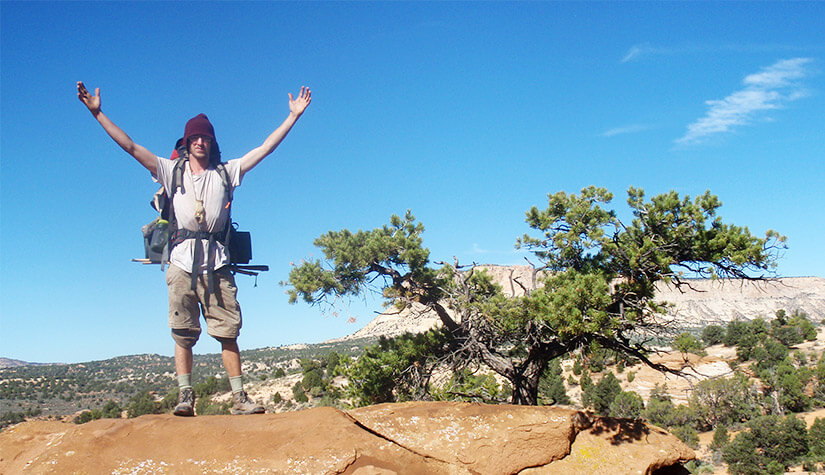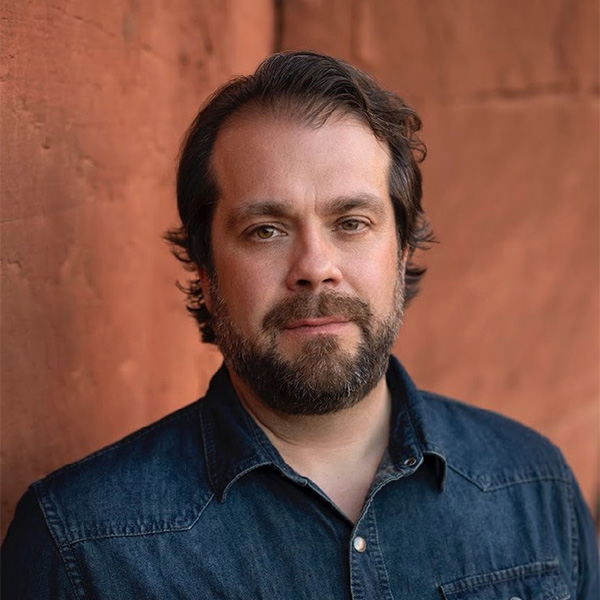The sky is clear, and the air crisp on this cold February morning in Kanab, Utah. Everything in the desert seems to wake up and come to life as the sun crests over the red rock mesas, illuminating the white sandstone rocks and cliffs. The kaleidoscope colors of juniper trees, ponderosa pines, sage and the soft, pale-orange sand seamlessly collide in this stunningly beautiful landscape. It is here, on the edge of the Grand Staircase-Escalante National Monument that I meet Shayne Gallagher, Co-founder and Executive Director of WinGate/Expanse Therapy Programs.
We gather our gear, fill our water bottles, and grab some food as we prepare to go to the "field" (WinGate/Expanse's permitted wilderness area) and visit two adolescent groups. Shayne points out landmarks as we wind through the desert on unpaved roads and sandy jeep trails. My window is down, and I can feel the cool desert air wash over me as the warm rays of sun fall on my face. Time seems to slow down as we delve deeper into the Grand Staircase. The cleansing smell of sage permeates the air as the desert opens up, revealing all of its treasures. And I am acutely aware and reminded that the love and fascination of the wilderness runs through my veins.
I have spent an immeasurable amount of time exploring the southern Utah desert, and still it feels new and fresh. As a child it wasn't uncommon for me to be dropped off in a wilderness therapy group somewhere in the Escalante, Boulder Mountain, or in the Henry Mountains (where the buffalo still roam). Having a dad who was one of the pioneers and founders of wilderness therapy, my spending time in the desert with a group was an inevitability. The surreal landscape of southern Utah always felt like my second home. Many parts of my idyllic childhood and formative years took place in the wilderness.
I Felt the Call of the Desert
As I got older, I spent less time in the wilderness and more time hanging out with friends, skiing, playing baseball, and fly-fishing in the Wasatch mountains of northern Utah. Although I wasn't in the wilderness as much, I often felt the pull and call of the desert. So, when I graduated from university, I sought a job in wilderness therapy. Initially it was a way for me to reconnect with that sense of romance and idealism that the wilderness provided in my youth.
In 2005, I was hired as a field support driver for a program in southern Utah. I spent my days in a truck driving around in the desert taking water, food and supplies to groups. It was amazing! I was back in the desert and, in some capacity, a part of the transformative process that happens in the wilderness. I worked in this capacity for a year, after which I found myself only weeks away from attending law school. Needless to say, the desert still called. So, I stayed and fed my passion. In the wilderness I was a part of something bigger than myself, something that changed lives. The same "something" that continued to change my life.
For the next fifteen years I worked in several different capacities and positions at the same program. Although I had many beautiful experiences, I still felt like I was searching for something…a "missing piece," an unknown quantity that I couldn't define, but knew was absent. So, I resigned from my position, and took some time to reset and reevaluate. I wasn't sure that my next step would be in wilderness therapy, I was fairly certain that I would find what was missing elsewhere.
This article continues on the next page..

